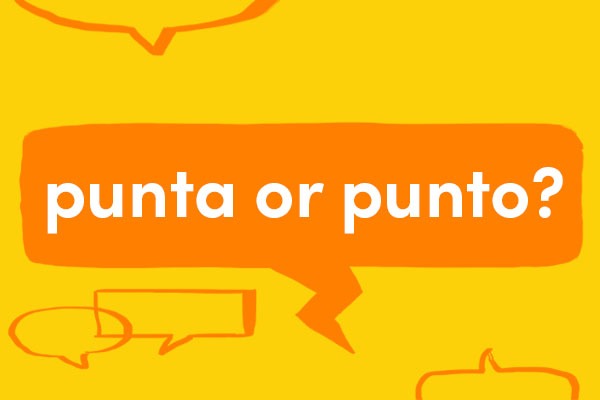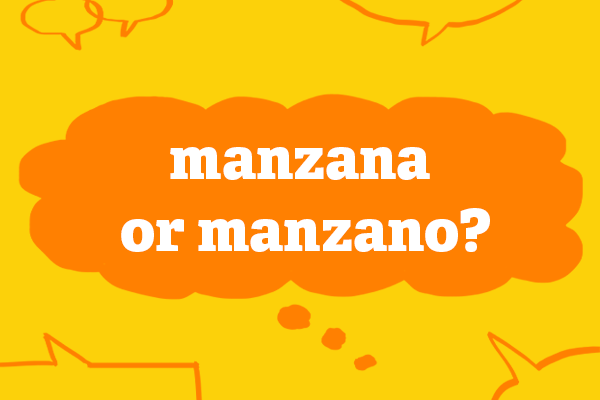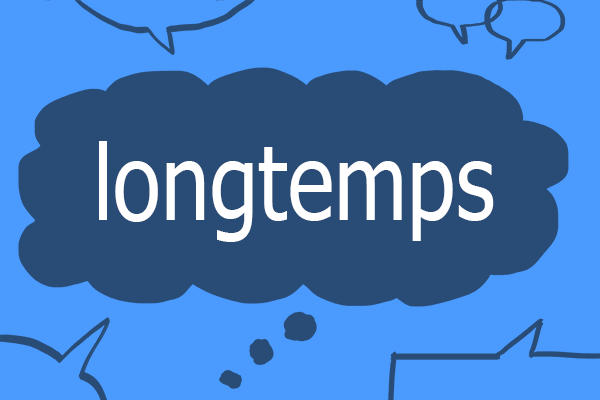Continuing our series looking at pairs of Spanish nouns whose meanings can be completely different depending on whether they are masculine (and end in -o in the singular and -os in the plural) or feminine (and end in -a in the singular and -as in the plural), we move to punto and punta and their commonest meanings.
We’ll begin with punto, whose pronunciation can be heard in the audio clip below:
You’ll often see un punto with an –o (masculine) on something, as it’s a small round mark or design, in other words a dot or a spot:
el punto rojo en el mapa
the red dot on the map
un hombre de corbata de mariposa con puntos amarillos
a man in a bow tie with yellow spots
Solo ha perdido tres puntos.
He’s only lost three points.
Gané por un punto.
I won by one point.
La bolsa de Nueva York cayó en picado (37 puntos en el índice Dow Jones).
The New York stock exchange plummeted (37 points on the Dow Jones Index).
For the next sense of punto you may need una aguja (a needle), as un punto with an –o (masculine) is a stitch, whether in sewing, surgery or knitting:
Está bordado a base de punto de cadeneta.
It’s embroidered with chain stitch.
18 puntos (de sutura)
18 stitches
But punto can be so much more than a mere stitch… el punto with an –o (masculine) can also be knitting or something made by knitting:
Allí se hace punto o ganchillo.
They do knitting or crochet there.
Llevaba un jersey de punto rosa.
She was wearing a pink knitted top.
una fábrica de géneros de punto
a knitwear factory
You shouldn’t leave out puntos when you’re writing as un punto with an –o (masculine) is the punctuation mark that sentences most commonly end in ‒ a full stop, or, in the United Staes, a period (.):
No he cambiado ni un punto ni una coma del texto original.
I haven’t changed a single full stop or comma from the original text.
Punto is also used in a number of idiomatic expressions, such as en punto and a punto:
Son las 11 en punto.
It’s 11 o’clock on the dot.
No va a estar a punto antes de diez años.
It won’t be ready for ten years.
For more idiomatic expressions with punto, please see dictionary entry.
Moving swiftly on to punta (feminine), you can listen to its pronunciation below:
la punta de un bolígrafo
the tip of a ballpoint pen
las puntas de acero de los crampones
the steel tips of the crampons
Le ofreció un triángulo de piña ensartado en la punta de un cuchillo.
He offered her a triangle of pineapple skewered on the end of a knife.
Algo tocó la punta de su bastón.
Something touched the end of his stick.
Deslizó las gafas hasta la punta de la nariz.
He slid his glasses down to the end of his nose.
Lo tocó con las puntas de los dedos.
She touched it with the tips of her fingers.
La punta (feminine) may also be the end of an area:
Recorría el pueblo de una punta a otra.
He went from one end of the town to another.
La punta (feminine) of a handkerchief or headscarf is the corner of it:
Empezó a limpiarse las gafas con la punta del pañuelo.
He began to clean his glasses with the corner of a handkerchief.
Remember to make any articles and adjectives agree with the noun they modify:
situado en un punto estratégico
situated at a strategic point
tres puntos minúsculos
three tiny dots
Si las puntas están abiertas, deben cortarse.
If the ends are split, they should be cut off.
DID YOU KNOW?
In punctuation, while un punto is a full stop or, in the United States, a period, dos puntos aren’t two of them. They’re a colon (:). Meanwhile, un punto y coma is a semicolon (;). And if you’re taking dictation, punto y aparte means full stop, new paragraph.
Punto, the punctuation mark, can be used figuratively too:
Se casó y punto.
He got married. Period or Full stop.
Puso el punto final a la trágica historia.
It put a final full stop to the tragic story.
To read about another pair of nouns whose meaning varies substantially depending on their gender and ending, come back next week.



